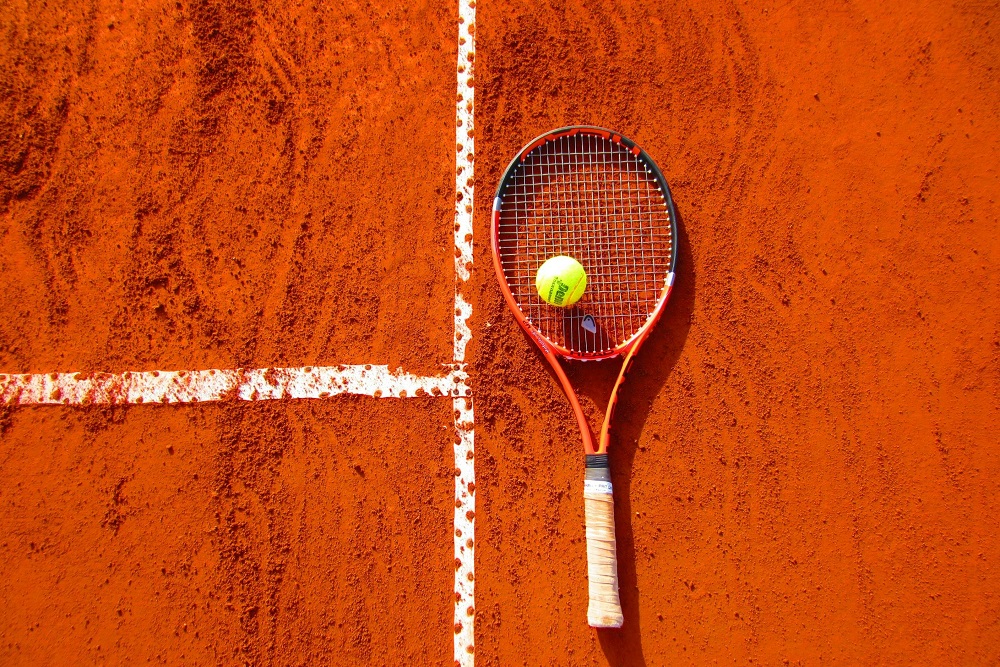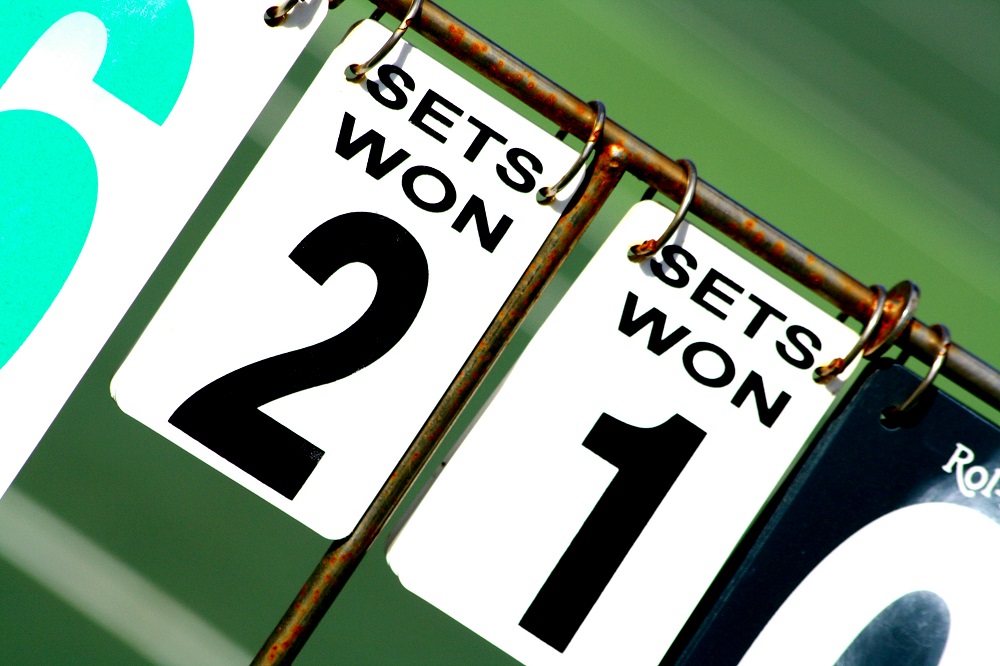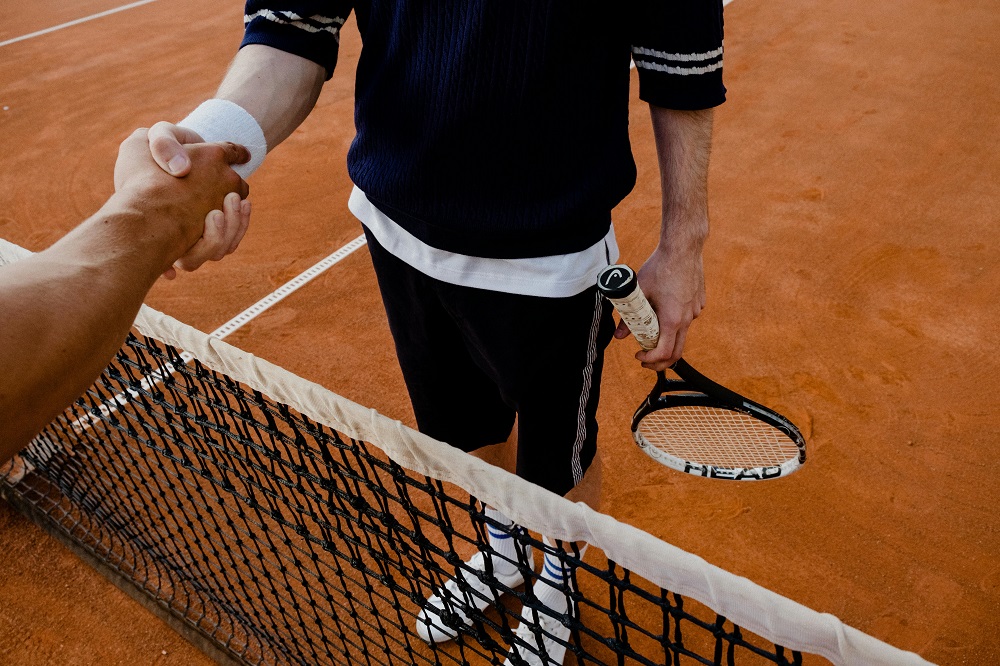Video monitoring in tennis: How CCTV accompanies major tennis championships
Like the rest of the world, sports are reaching a stage where video surveillance must be purposeful, transparent, and regulation-compliant.
Global tennis tournaments – such as the US Open, Cincinnati Open, Canadian Open, and Rolex Shanghai Masters – bring together not only top-tier players but also the highest level of event organization. This is achieved, in part, through cutting-edge video surveillance technologies – from real-time broadcasting with tracking of players’ and ball positions at any moment to AI-powered video analytics that monitor security nuances at stadiums while strictly adhering to privacy standards.

How video surveillance helps in tennis
What tasks do video surveillance systems perform at tennis championships today? Let’s break it down:
- Player tracking: Robotic and PTZ cameras enable seamless live broadcasting allowing to observe the smallest movements of athletes and their emotions.
- Ball tracking: Over 10 cameras track the ball’s trajectory in 3D at 340 frames per second.
- Broadcasting: Remote control of TV cameras from studios optimizes costs and improves accuracy.
- Statistics with AI: Real-time video stream data help manage spectator flow and enhance tournament efficiency.
- Security with instant response: It’s impossible for humans to monitor everything across all cameras, making highly accurate and instantly responsive AI essential.
- Compliance: Priority is given to data privacy, lawful surveillance, and rigorous checks of operators and third parties, reflecting the high standards of security and data management at sports events.
Tennis video monitoring: Player tracking
At tournaments like the US Open and Cincinnati Open, advanced robotic and PTZ cameras equipped with facial recognition and player tracking software deliver precise multi-angle coverage with fewer operators. These cameras automatically follow players and key on-court actions, ensuring uninterrupted broadcasting.

Tennis video monitoring: Ball tracking
Most ATP tournaments now rely entirely on electronic line-calling systems, which demand advanced ball-tracking capabilities for high accuracy and reliability. This technology replaces line judges for all “in” and “out” decisions, offering greater accuracy and fairness in officiating.
Tennis video monitoring: Security with instant response
Beyond officiating, extensive video surveillance and monitoring systems are deployed at sports venues to ensure security via such features like abandoned object detection and crowd management. To prevent higher risks, more sophisticated technologies like drone detection and preventive sound recognition are applied. These tools enable instant responses to potential security threats.
Tennis video monitoring: Broadcasting
Broadcasting companies like ATP Media employ hybrid production models where multiple courts – especially secondary ones – are fully serviced remotely. Camera control, replay playback, and graphics are managed centrally from studios far from the venue, optimizing setups and reducing costs. These allow for rapid deployment and scaling of broadcasting infrastructure at events.
Tennis video monitoring: Statistics with AI
AI-based analytics are increasingly utilized not only for officiating and security but also to enhance the fan experience through live statistics via counting visitors, match highlights with emotion recognition, tracking unoccupied spaces, improving both operational efficiency and fan engagement, and interactive digital displays with visitors’ gender statistics.

Tennis video monitoring: Compliance
Surveillance complies with strict privacy laws (e.g., Canada’s PIPEDA, China’s PIPL), mandating transparency justification in camera usage while balancing security and privacy. At the Rolex Shanghai Masters in 2025, video surveillance and data protection compliance are governed by a robust and evolving legal and security framework in China. Features like recorded footage for event analysis at any time, instant notifications, and data encryption are invaluable on such major events. Additionally, integration with thermal cameras and mask detection can monitor health and safety conditions, such as post-COVID compliance.
What else video surveillance is used for at tennis tournaments?
Seamless coordination of multiple cameras
Following a major upgrade of video and audio systems at the Cincinnati Open, each of the 31 courts is equipped with 30–45 cameras, requiring seamless coordination between them.
Cloud video surveillance
Cloud-based solutions provide higher operational performance and convenient remote access from anywhere in the world.
Strict restrictions on spectator video devices
Spectators are permitted only cell phones and SLR cameras with lenses up to 300mm. Professional video recording devices require official media credentials, and live streaming or shot-by-shot coverage by spectators is prohibited – a rule that must be strictly enforced. CCTV comes into play immediately when a rule breaker appears.
AI for speaker commentary
Voice-to-text technology enables seamless conversion of speaker commentary into text, facilitating the extraction of quotes and preparation of review articles.
In conclusion
Overall, there is a clear trend toward highly automated, AI-enhanced, and remotely controlled video surveillance and broadcasting systems. These technologies improve fairness, fan engagement, and operational efficiency at the world’s leading summer tennis championships in 2025.

P.S. Tennis championships demand a robust and reliable video surveillance system. Xeoma video surveillance software – built on 20 years of expertise – is ideal for high-quality monitoring at such events. The result is a smart, adaptable solution tailored to the unique needs of sports events, delivering unparalleled performance and flexibility.
With Xeoma, you get:
- 100+ features, including AI-based video analytics.
- Both on-premise and cloud solutions: operate on your own servers solely or use Xeoma Cloud.
- Free and unlimited client connections.
- Full customization of server and clients, allowing changes to not only the name but also the functionality and appearance of the program.
- Compatibility with 99% of cameras, without being tied to a specific brand.
- Support for multiple platforms: Windows, Linux, Linux/ARM, Mac OS X, Android, and iOS.
- Intuitive interface, extensive documentation, and responsive support.
- Ability to deploy your own cloud service for subscription sales to subscribers.
For more details, explore Xeoma’s capabilities with free demo license and see how it can elevate video surveillance at tennis championships and beyond.
Try Xeoma for free! Enter your name and your email to send the license to in the fields below, and click the ‘Get Xeoma free demo licenses to email’ button.
We urge you to refrain from using emails that contain personal data, and from sending us personal data in any other way. If you still do, by submitting this form, you confirm your consent to processing of your personal data
August 01, 2025
Read also:
Video surveillance system at sports building
Stay safe during ATP cup 2021
Benefits of CCTV: Use of video surveillance in China
Video surveillance for condominium
Public safety and the benefits of city CCTV surveillance
Video surveillance in golf championships: enhancing the experience and ensuring security
Top global football leagues: the role of video surveillance
Racing: video surveillance on Formula 1 World Championship
Video security at Ironman Tallinn, Copenhagen Marathon and other triathlons and races